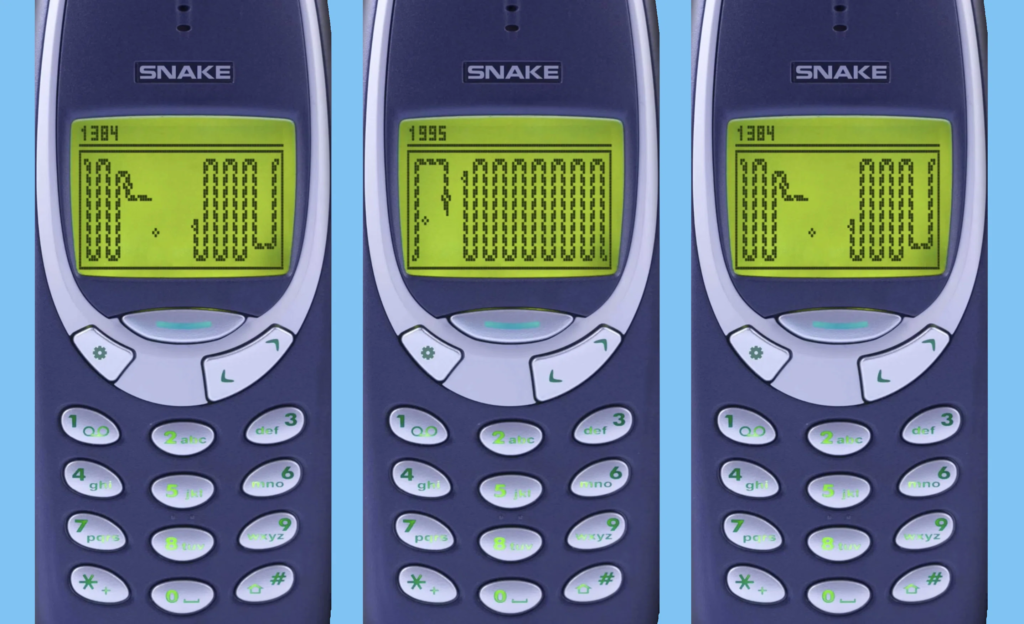The Snake game is one of the most iconic and beloved games in the history of video gaming. Simple in concept yet addictive in its gameplay, Snake has captivated generations of players across multiple platforms since its debut. Its influence stretches from the Snake Game earliest days of mobile gaming to modern interpretations that pay homage to its straightforward but challenging mechanics. With its roots in the early 1970s and its rise to mainstream popularity in the late 1990s, particularly on Nokia mobile phones, the Snake game holds a special place in gaming history.
Origins of the Snake Game

The origins of the Snake game can be traced back to the 1970s, during the early days of computer gaming. One of the earliest versions of Snake was called Blockade, a two-player arcade game released by Gremlin Industries in 1976. In Blockade, players controlled a line that grew in length as the game progressed, and the objective was to avoid crashing into obstacles or the opponent’s line. This basic premise of avoiding collisions while controlling an ever-growing object laid the foundation for what would later become Snake.
In the years that followed, several variants of Snake Game Blockade appeared in different forms. Games like Surround on the Atari 2600 and Worm on the TRS-80 expanded on the core mechanics, but it was still a relatively niche game. However, Snake’s true rise to fame came with the proliferation of mobile phones in the 1990s.
Snake’s Iconic Rise on Nokia Phones

The Snake game achieved widespread popularity in 1997 when Nokia, the Finnish telecommunications giant, decided to include a version of the game on their mobile phones, starting with the Nokia 6110. This was a revolutionary move at a time when mobile phones were primarily used for calls and texts. The idea of having a game on a mobile device was novel, and Snake became one of the first games to reach a mainstream audience via this medium.
The version of Snake that Nokia popularized was simple yet incredibly engaging. Players controlled a snake that moved around the screen, consuming pixels (or “food”) that caused the snake to grow longer. The objective was to avoid colliding with the walls or the snake’s own tail while trying to consume as much food as possible. As the snake grew longer, the game became more challenging, requiring greater precision and strategic thinking from the player.
The beauty of Snake on Nokia phones was Snake Game in its simplicity. The graphics were minimal, consisting of just a black-and-white display with basic shapes, yet the gameplay was immensely satisfying. The game used the phone’s numeric keypad for controls, making it easy to pick up and play, even for people who weren’t typically gamers. This accessibility, combined with its addictive nature, made Snake a huge success. Nokia preloaded the game on over 350 million devices, helping it become one of the most widely played video games of all time.
Gameplay Mechanics: Simple Yet Addictive

The enduring appeal of the Snake game lies in its simplicity. The rules are easy to understand, but mastering the game requires skill, quick reflexes, and strategic thinking. The core mechanics of Snake have remained largely unchanged over the years, with only minor variations in different versions.
In the most basic form of Snake, players control the movement of the snake, which continuously moves in one direction until the player presses a button to change its course. The snake consumes food scattered on the screen, causing it to grow longer. As the snake grows, the player must navigate increasingly complex paths while avoiding collisions with the snake’s tail or the edges of the game area.
The challenge of the game ramps up as the snake grows longer, leaving less room for error and requiring the player to think ahead. Snake is an example of a game where the difficulty escalates naturally through gameplay, as the player’s success (in making the snake longer) also increases the difficulty.
Variations and Evolution of the Snake Game

While the original concept of Snake has remained Snake Game largely the same, numerous variations and adaptations have been created over the years. Different developers and platforms have introduced new features, graphics, and gameplay mechanics to keep the game fresh and exciting.
Some versions of Snake introduced power-ups, obstacles, or even enemies that add more layers of complexity to the game. In more modern iterations, multiplayer versions have also been developed, allowing players to compete against each other in real-time.
One notable example is Slither.io, an online multiplayer version of Snake released in 2016. In Slither.io, players control snakes in a large arena and compete to grow the longest by consuming pellets scattered across the field. What sets Slither.io apart is the competitive multiplayer element, where players can trap each other and cause opponents to crash into their snakes, adding a new level of strategy and competition to the classic Snake formula.
Another important variation is the visual evolution of the Snake game. While the original Nokia version used basic black-and-white graphics, later versions have adopted colorful, vibrant designs with smooth animations and even 3D graphics. Snake has also made its way onto a variety of platforms, from web browsers to smartphones and gaming consoles, each time bringing new twists to the formula.
Cultural Impact and Legacy
The cultural impact of the Snake game cannot be understated. Snake was many people’s first introduction to mobile gaming, and its widespread popularity helped pave the way for the mobile gaming industry that we know today. The game demonstrated tha Snake Game t even simple, minimalist games could captivate players for hours and generate significant interest in gaming on mobile devices.
The game’s influence is still visible today. Modern mobile games often take inspiration from Snake’s straightforward gameplay and easy accessibility. In fact, Snake’s core design principles—simplicity, ease of play, and escalating difficulty—have become key components of many successful mobile games.
Additionally, the nostalgia factor associated with Snake has led to its re-release on modern platforms. Nokia has reintroduced the game on newer devices, and several mobile app stores feature remakes and reinterpretations of Snake, all of which keep the spirit of the original alive while catering to contemporary audiences.
Snake’s cultural significance also extends to its role in demonstrating how games can become a shared cultural experience. For many people who grew up in the 1990s and early 2000s, playing Snake was a communal activity, whether it was competing for Snake Game high scores with friends or passing time during a commute. The game’s universal appeal transcended age, gender, and gaming experience, making it a true cultural icon.
Conclusion
The Snake game is a timeless classic that has left an indelible mark on the world of video games. From its humble beginnings in the arcades of the 1970s to its explosive popularity on Nokia mobile phones in the late 1990s, Snake has remained relevant through its simplicity, addictive gameplay, and ability to evolve with the times.
Snake’s enduring appeal lies in its accessibility and challenge, making it a perfect example of how minimalist design can create an engaging and timeless gaming experience. Whether it’s the original Nokia version or modern adaptations like Slither.io, the core mechanics of Snake continue to entertain players worldwide.


